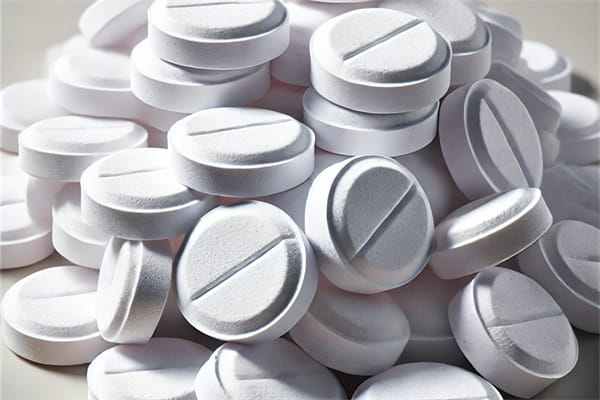Maintaining a clean and safe swimming pool is essential for every pool owner, and chlorine tablets are a key player in this process. Chlorine tablets, often referred to as “chlorine pucks,” are a convenient and effective way to keep your pool water sanitized. They dissolve slowly, releasing chlorine over time to kill bacteria, algae, and other harmful contaminants. In this article, we’ll walk you through the proper usage of chlorine tablets, ensuring your pool stays pristine all season long.

Ⅰ. Understanding Chlorine Tablets
What Are Chlorine Tablets?
Chlorine tablets are compressed blocks of chlorine used to sanitize pool water. They are designed to dissolve slowly, releasing chlorine gradually to maintain consistent levels in the pool. Chlorine tablets come in various sizes, typically 1-inch and 3-inch diameters, with the latter being more common for larger pools.
Types of Chlorine Tablets
There are primarily two types of chlorine tablets:
Trichlor (Trichloroisocyanuric acid): These are the most commonly used and are known for their high chlorine content and slow dissolution rate.
Dichlor (Sodium Dichloroisocyanurate): These dissolve faster and are usually used for smaller pools or spas.
Ⅱ. Correct Dosage
Determining the Right Amount
The amount of chlorine tablets needed depends on the size of your pool. As a general rule, you need approximately one 3-inch chlorine tablet for every 5,000 gallons of water. For 1-inch tablets, you might need more, as they are smaller and dissolve quicker.
Dosage Examples
Here are some examples to illustrate proper dosage:
10,000-gallon pool: Use 2-3 chlorine tablets per week.
20,000-gallon pool: Use 4-6 chlorine tablets per week.
Always refer to the manufacturer’s instructions on the packaging for specific guidance.
Ⅲ. Placement of Chlorine Tablets
Chlorine Dispensers
There are several methods to introduce chlorine tablets into your pool:
Floating Dispensers: These are easy to use and float on the surface of the pool, gradually releasing chlorine as they move around.
In-Line Chlorinators: Installed directly into the pool’s plumbing system, these provide a more controlled and consistent release of chlorine.
Skimmer Baskets: Placing chlorine tablets in the skimmer basket is another common method, as it allows the pool’s circulation system to distribute the chlorine.
Floating Dispensers
Floating dispensers are user-friendly and affordable. To use one:
1. Open the dispenser and insert the chlorine tablets.
2. Adjust the flow rate setting to control how much chlorine is released.
3. Place the dispenser in the pool and let it float around.
In-Line Chlorinators
In-line chlorinators are ideal for those looking for a more hands-off approach. Here’s how to use them:
1. Install the chlorinator in your pool’s plumbing system (typically requires professional installation).
2. Add chlorine tablets to the chlorinator.
3. Set the dial to control the chlorine release rate.
Skimmer Baskets
Using skimmer baskets is straightforward:
1. Place the required number of chlorine tablets directly into the skimmer basket.
2. Ensure your pump runs for several hours each day to allow proper circulation.
Ⅳ. Frequency of Adding Chlorine Tablets
Regular Maintenance
Regularly adding chlorine tablets is crucial for maintaining proper chlorine levels. A typical maintenance schedule includes:
Daily: Check chlorine levels and adjust as necessary.
Weekly: Add the required number of chlorine tablets.
Monthly: Perform a thorough water test to check all chemical levels.
Adjusting Frequency
Adjust the frequency based on pool usage, weather conditions, and water temperature. For instance, during hot weather or periods of heavy use, you may need to add chlorine more frequently.
Ⅴ. Monitoring Chlorine Levels
Testing the Water
Regularly test your pool water using test strips or liquid test kits to monitor chlorine levels. This ensures the water remains safe and clean.
Optimal Chlorine Levels
The ideal chlorine level for pool water is between 1-3 ppm (parts per million). Maintaining this range helps prevent algae growth and keeps the water safe for swimming.
Adjusting Chlorine Levels
If chlorine levels are too high, reduce the number of tablets or use a chlorine neutralizer. If levels are too low, add more tablets or perform a shock treatment.
Ⅵ. Tips for Effective Use
Consistent Testing
Regularly testing your water ensures you maintain optimal chlorine levels. Test at least once a week, and more frequently during heavy pool use.
Balancing Pool Chemistry
Maintaining balanced pool chemistry enhances the effectiveness of chlorine tablets. Ensure pH levels are between 7.2 and 7.6, and keep alkalinity and stabilizer levels in check.
Storage and Handling
Store chlorine tablets in a cool, dry place, away from direct sunlight and moisture. Always use gloves when handling chlorine tablets, and follow safety instructions on the packaging.
Ⅶ. Conclusion
Using chlorine tablets properly is essential for maintaining a clean and safe swimming pool. By following these guidelines on correct dosage, placement, and frequency, and by regularly monitoring chlorine levels, you can ensure your pool remains inviting and healthy. Regular maintenance and a proactive approach will keep your pool in top condition, ready for enjoyment all season long. If you have any questions or need further advice, feel free to leave a comment or reach out.

 Instant
Quote
Instant
Quote Email
Us
Email
Us